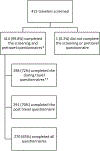Efficacy of bismuth subsalicylate on the prevention of travellers' diarrhoea, 2018-2023
- PMID: 40439228
- PMCID: PMC12439095
- DOI: 10.1093/jtm/taaf047
Efficacy of bismuth subsalicylate on the prevention of travellers' diarrhoea, 2018-2023
Abstract
Background: Travellers' diarrhoea (TD) is the most common travel-related illness. Bismuth subsalicylate (BSS) is indicated for the treatment of TD. BSS is also used off-label for the prevention of TD, based on studies from the 1980s indicating TD protection; however, these studies have limitations. The objective of this study was to determine the efficacy of BSS in the prevention of TD.
Methods: This study was a prospective, double-blinded, placebo-controlled, randomized clinical trial (NCT03535272) with two arms: BSS 4 tablets twice daily (2.1 grams of BSS total) vs placebo. Travellers were included if they were ≥ 18 and < 70 years of age at the time of enrollment, were leaving for an international trip ≥7 days after their pretravel consultation, travelling in country for ≥7 days but ≤ 21 days, and travelling to either Southeast Asia, South Central Asia, North Africa, or Sub-Saharan Africa. Self-completed web-based questionnaires were administered before, during, and after travel.
Results: 270 participants were included. The median age was 32 years (Interquartile range [IQR]: 27-44); 63% were female. Travellers were most frequently White (144; 61%) and non-Hispanic (239; 94%). The most frequent country of travel was Kenya (n = 87; 32%). The median total trip duration was 10 days ([IQR]: 8-13). The most frequent reason for travel was leisure/tourism (230, 85%). There was no significant difference among the groups for symptoms of loose stool and/or diarrhoea, although target sample size was not reached.
Conclusions: This study provides the first new data since the 1980s about the potential use of BSS in the prevention of TD. These data should not be viewed as evidence in isolation because of sample size constraints; further studies are needed to determine if there is a benefit in certain traveller groups or under certain circumstances.
Keywords: Travellers’ diarrhoea; prevention; travel.
Published by Oxford University Press on behalf of the International Society of Travel Medicine 2025.
Figures

References
-
- Connor B Travelers’ diarrhea. In: Nemhauser J (ed). Yellow Book. New York, NY: Oxford University Press, 2024, pp. 85–91.
-
- Carroll SC, Castellanos ME, Stevenson RA, Henning L. Incidence and risk factors for travellers’ diarrhoea among short-term international adult travellers from high-income countries: a systematic review with meta-analysis of cohort studies. J Travel Med 2024; 32:taae008.
-
- Heather CS. Travellers’ diarrhoea. BMJ Clin Evid 2015; 0901.
-
- American Family Physician. Prevention and treatment of Traveler’s Diarrhea. Am Fam Physician 1999;60:119–124. - PubMed
-
- Arcilla MS, Hattem JM, Haverkate MR et al. Import and spread of extended-spectrum β-lactamase-producing Enterobacteriaceae by international travellers (COMBAT study): a prospective, multicentre cohort study. Lancet Infect Dis 2017; 17:78–85. - PubMed
Publication types
MeSH terms
Substances
Grants and funding
LinkOut - more resources
Full Text Sources
Medical

